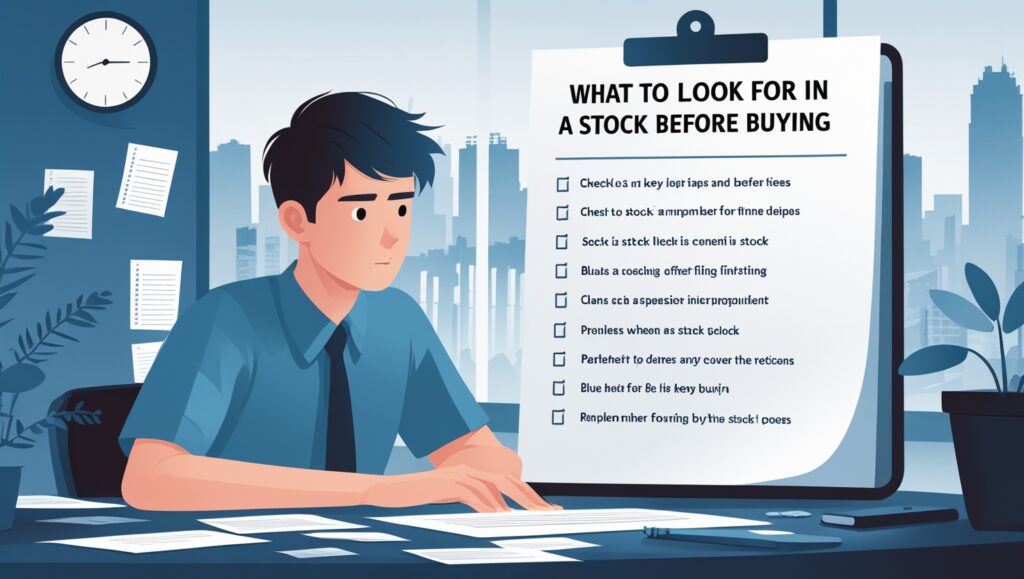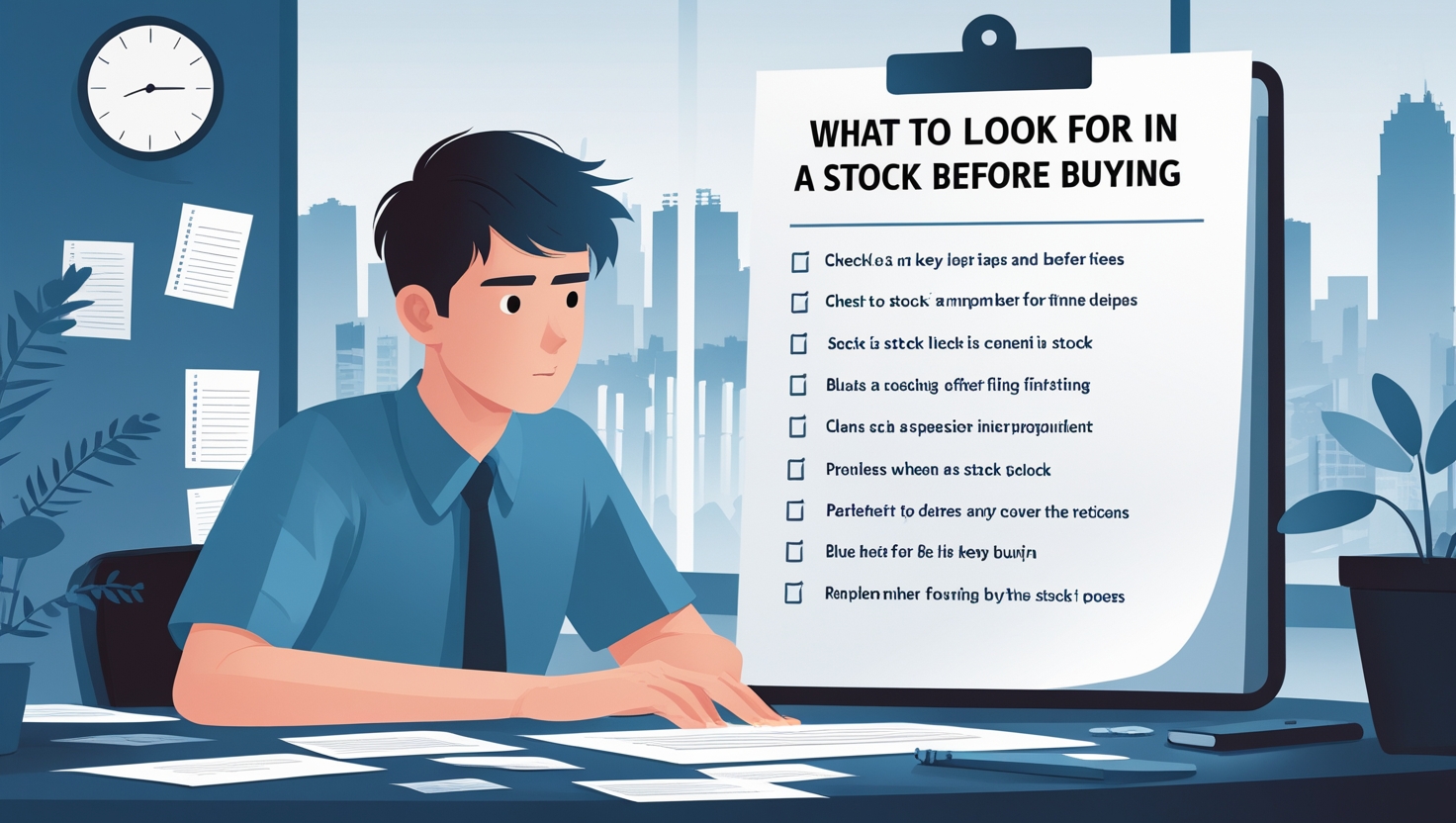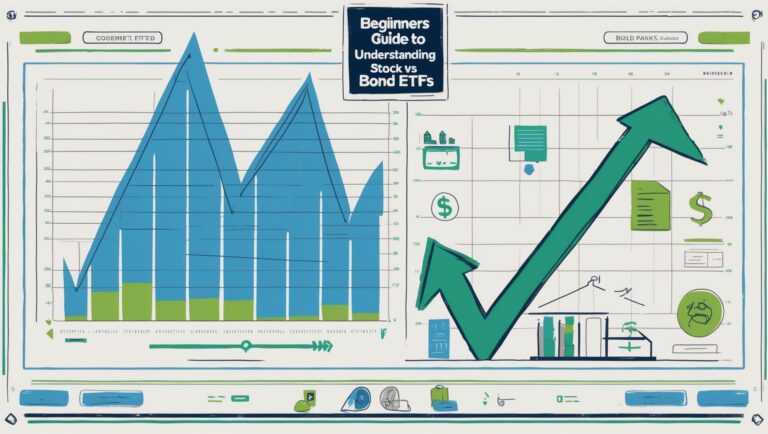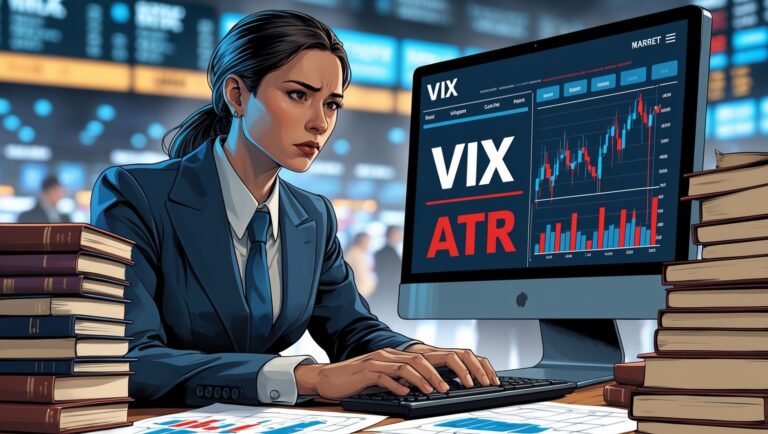What to Look for in a Stock Before Buying (My Personal Checklist)
What to Look for in a Stock Before Buying (My Personal Checklist)
If you’re tired of second-guessing every trade or buying stocks just because someone mentioned them online, I get it. I used to jump into trades with no real reason other than hype. That’s exactly why I created a personal checklist — a simple but powerful way to know what to look for in a stock before buying.
This checklist keeps me grounded, focused, and consistent. It helps me avoid emotional trades and zero in on setups that have the best chance of moving in my favor. And if you want my full strategy — from how I build my daily watchlist to how I pay my bills with stocks — I break it all down inside my ebook here.

Table of Contents
I Always Ask: Why Is This Stock Moving?
This is the first question I ask before buying anything.
If there’s no clear catalyst — like earnings, a press release, or a sector-wide move — I stay away. Random spikes with no news often fade just as fast as they rise. I want to know what’s fueling the move and whether that momentum can continue.
Volume Comes Before Everything Else
Before I buy, I look at volume. If no one’s trading the stock, I don’t touch it. I need to see at least 200k to 500k shares traded, ideally more — especially in pre-market. Volume confirms interest. If there’s no volume, there’s no liquidity — and that means higher risk and harder exits.
I learned this the hard way with low-volume setups that looked good on the chart but didn’t move once I entered.
Clean Pre-Market or Intraday Structure
I only trade stocks that show clean technical levels. That means:
- A clear breakout zone
- Solid support area
- No chop or wild wicks
If the chart looks messy, unpredictable, or too volatile, I skip it. I’d rather wait for a cleaner setup than gamble. This is part of what I teach inside Pay Bills With Stocks, because it’s saved me from chasing terrible trades.
Float Size — The Hidden Factor
Before I enter any trade, I always check the float size. Stocks with low float and high volume tend to move fast. But if the float is too low, they can also be too volatile. I prefer something between 10M and 100M float — enough to move quickly, but not uncontrollably.
High-float stocks need a lot more volume to push, so I always keep this in mind as part of my process.
Price Range That Fits My Style
Some traders love $100+ stocks. I don’t. I prefer stocks in the $1 to $30 range, depending on the setup. This range offers good movement, manageable risk, and better position sizing.
Before buying, I ask myself: Can I size this position reasonably and still manage risk? If not, I pass. I don’t chase stocks that don’t fit my style or account size.
Is There a Catalyst I Can Understand?
A big part of my checklist is understanding the news or reason behind the move. I don’t just buy because the stock is green. I want to know:
- Is it earnings?
- FDA approval?
- Industry hype?
And more importantly — how is the stock reacting to that news? I only buy when the reaction confirms the move. I talk more about how I filter and interpret catalysts in my ebook.
Is It Already Extended?
Before buying, I check the chart’s bigger picture. If the stock is already up 100% from the day before or sitting at resistance, I’m cautious. I want to enter before the breakout, not after the move is over.
Part of my checklist is asking: Am I late? If the answer is yes, I wait for a pullback or skip the trade entirely.
Does It Fit My Daily Watchlist Rules?
Every morning, I build a watchlist of no more than 6 stocks. If the stock I’m analyzing doesn’t meet my core rules — volume, news, price action, float — I don’t add it.
This keeps me focused and avoids decision fatigue. If I try to track 20 stocks, I miss the best setups. My checklist keeps me sharp — and I teach it in full inside my ebook.
Do I Know My Entry, Stop, and Target?
Before buying, I define three things:
- Entry level
- Stop loss
- Profit target
If I don’t have all three clearly mapped out, I don’t trade. Guessing is not a strategy. My trades are planned in advance. I know exactly where I’m wrong, and where I’m right. That’s how I protect my capital and keep my confidence high.
What’s the Risk/Reward?
Even if everything else checks out, I still ask: Is this trade worth the risk? If I’m risking $50 to make $50, that’s not a setup I want. I look for at least 2:1 risk-to-reward — ideally more. Small accounts grow by taking trades that give you more upside than downside.
Final Thoughts
Having a personal checklist changed everything for me. It took the guesswork out of trading. It gave me confidence, structure, and consistency — especially when I was just starting with a small account.
If you want to learn how I trade, how I choose my 6 daily stocks, and how I built a strategy that helps me pay bills with stocks, you can grab my ebook here. I created it for traders who are tired of losing and ready to simplify the process.
This checklist is how I filter the noise — and trade with purpose.
Another thing I always consider before buying is how the stock moves intraday. Some tickers move smoothly, while others whip up and down with no rhythm. I avoid stocks that have choppy, unpredictable price action. If I can’t read the flow of candles or predict how it might behave based on recent moves, it’s not worth the risk. I’d rather wait for a cleaner setup with structure.
I also look at the time of day I’m planning to enter. I get my best results within the first 90 minutes of the market, especially between 9:40 and 11:00AM. That’s when momentum is cleanest and volume is the highest. If I’m looking at a stock near 2PM, I approach it differently — midday moves tend to be slower and more unpredictable.
Another item on my checklist is whether the stock has room to run. I look to the left of the chart — are there clear resistance zones? If the stock breaks out, does it have space to climb another 10–20% before hitting a wall? If not, I’ll likely pass. I want my trades to have potential, not limits.
I also think about who else is watching this stock. If it’s being mentioned across multiple scanners, trending on Twitter, or popping up in Discords, I pay extra attention. Volume plus social attention often leads to faster moves — but I never rely on hype alone. I still follow my plan, check levels, and make sure it fits my risk profile. I cover how I factor in crowd attention in my ebook because timing matters more than you think.
One thing that’s easy to overlook is how wide the spread is. If the bid/ask spread is too wide, it adds unnecessary risk — especially with a small account. Before I buy, I make sure the spread is tight enough to manage entries and exits smoothly. I avoid thin stocks that jump around unpredictably when I try to place an order.
If I’m trading based on a news catalyst, I make sure the news is fresh and relevant. Old news won’t move a stock the same way. I also check the source. A real SEC filing or major press release is more reliable than a vague PR headline. And just because there’s news doesn’t mean it’s tradable — I want to see how the market is reacting to that news before jumping in.
I keep an eye on relative volume, not just total volume. A stock that trades 3x or 5x its average daily volume is showing real interest. That kind of surge attracts day traders, which increases momentum and volatility — and those are the conditions I look for. I teach how to filter for these moves in my ebook, because they’re usually where the biggest intraday moves happen.
I also consider whether the stock is near a breakout or breakdown zone. I like trading when a stock is about to make a decision. If it’s sitting right under resistance or right above support, I know something is about to happen — and that’s when I want to be ready. The tighter the setup, the better the risk/reward.
Part of my routine is checking whether the stock has had recent history of running. If it spiked hard last week on news and is now setting up again, that tells me it has potential. Stocks tend to repeat behavior — especially small caps. Recognizing these patterns helps me choose the tickers with the most energy.
If I’ve had a red day or a few losses in a row, I’m extra cautious. That emotional state can lead to revenge trading. My checklist includes checking my own mindset before entering anything. I ask, “Am I making this decision from a place of clarity or frustration?” That question alone has saved me thousands over time.
Sometimes I like the setup, but the timing is off. In that case, I just set a price alert and wait. I don’t force trades. If everything else checks out, but the entry isn’t right yet — I’m patient. Having the discipline to wait is part of the process. It’s something I had to learn through trial and error, and it’s a big reason why I built Pay Bills With Stocks — to give others the structure I didn’t have when I started.
Lastly, before I buy, I always double-check that the stock fits my overall plan. Does it align with my goals? Can I afford the risk? Am I following my rules or just chasing the move? These questions help me stay consistent — and consistency is what grows accounts over time.

Stay ahead in the stock market! Subscribe to our newsletter and receive exclusive stock flow reports, trading insights, and actionable tips directly in your inbox. Join thousands of traders who get our updates first.







